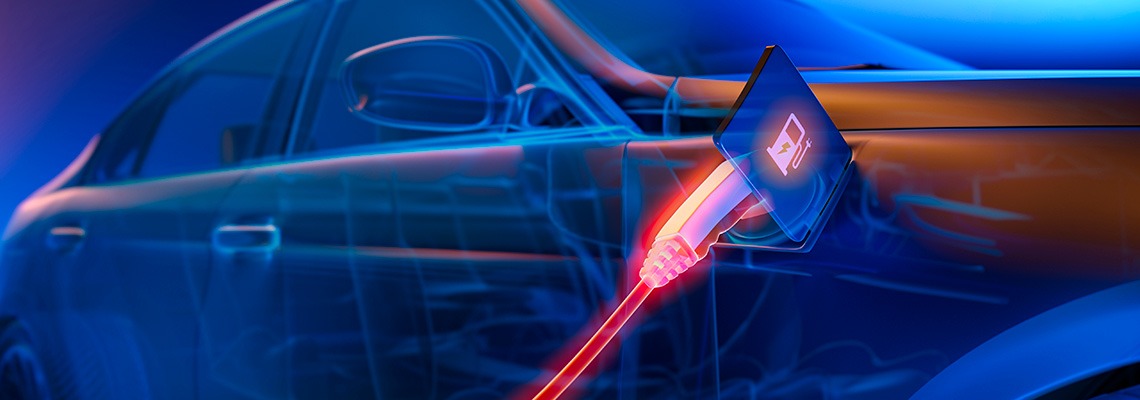Alternative Power Report, September 2022
The September 2022 issue of the Alternative Power Report from PSR discusses Cummins new energy storage system, battery electric forecasts and EV shipping applications. PSR

Follow PSR’s team of analysts as they track the rapidly expanding global battery electric power market, including, battery technology, transportation, eMobility, mergers and acquisitions and more.
2022-10-02
The September 2022 issue of the Alternative Power Report from PSR discusses Cummins new energy storage system, battery electric forecasts and EV shipping applications. PSR
2022-09-29

With the exception of 2022 (+7.6%), Battery Electric as a power source is expected to grow between 10% and 17% throughout the forecast period, while ICE growth rates start the period at -2.3% and then grow at less than 1% for 2023 to 2025.
Battery Electric is expected to grow from 12.8% of the market in 2022 to 21.2% by 2027, while during the same period ICEs are expected to decline from 85% of the market to 75%. PSR
Guy Youngs is Forecast & Adoption Lead Analyst at Power Systems Research
Consumer adoption of EVs has gathered momentum this year, spurred by higher global oil prices. The Russia-Ukraine war has made EVs suddenly more appealing to many car buyers, accelerating adoption globally. The higher oil prices are driving EVs closer to cost parity with internal combustion engine (ICE) vehicles. In Bloomberg New Energy Finance’s most recent Electric Vehicles Outlook 2022 report, it projected EV sales to hit 20.6 million units by 2025.
On Tesla’s most recent earnings call, Elon Musk admitted, “We do not have a demand problem but a production problem.” Other car manufacturers such as Ford, for instance, says it can build its F150 Lightning and the Mustang Mach E fast enough to keep up with demand
Cummins $24 million stake in the startup VoltStorage gives them a foot in the door with new iron redox flow technology. There is nothing wrong with lithium-ion energy storage but global demand for energy storage has nowhere to go but up, and so are lithium prices. While lithium is relatively abundant in the ground, but current supply is falling behind demand. At the same time, lithium extraction is messy and has significant environmental impact, causing local opposition to new mines and other facilities which could stall development. Aside from accessing a recyclable supply chain that can avoid conflict issues, flow battery fans note a long list of advantages over lithium-ion technology including lower cost, longer duration, and ease of scalability
Source: CleanTechnica Read The Article
PSR Analysis: Cummins has been making investments into EVs (such as the purchase of Brammo in 2017 and Meritor in 2022) for some time and this low cost, long duration, grid scale energy storage battery is part of their plan. This diversifies their portfolio of alternative power systems and helps them in the gid scale storage market. One of the major advantages for flow batteries is that they aren’t lithium-based and are therefore not subject to the same massive and sustained price increases that lithium material is seeing. PSR
Guy Youngs is Forecast & Adoption Lead Analyst at Power Systems Research
Researchers from the University of California, Berkeley, and Lawrence Berkeley National Laboratory have released a study which examines “the technical outlook, economic feasibility, and environmental impact of battery-electric containerships.” By modelling 5 to 10 GWh electrified containerships, they found that 40% of routes today could be electrified in an economically viable manner, before considering environmental costs.
Using only technology available for purchase today, nearly all ships with routes shorter than 2,000 kilometres are economically advantageous, and ships with routes as long as 3,000km are economically viable.
Source: PV Magazine Read The Article
PSR Analysis: Ships transport more than 10 billion metric tons of cargo each year, including clothing, electronics, and oil, and almost all of these ships run on fossil fuels, so they emit a lot of carbon pollution. Maritime shipping causes about 3% of global greenhouse gas emissions. As the costs of large ICE containerships continue to rise electrified containerships become increasingly cost effective. Electrified containerships are 80% more efficient than their ICE counterparts, and use 30% less energy overall. PSR
Guy Youngs is Forecast & Adoption Lead Analyst at Power Systems Research
2022-09-28
On Sept. 13, 2022, Honda announced it will eliminate gasoline-powered motorcycles by the mid-2040s. All new vehicles will be EV motorcycles; 3.5 million, or 15% of global sales, are to be EV motorcycles by 2030. Honda has already declared that all its four-wheeled vehicles will be EVs by 2040, but this is the first time the company has laid out a concrete strategy for decarbonization on two wheels.
From now on, Honda will pursue electrification exclusively with EVs. First, it will launch at least 10 EV motorcycle models by 2025. Since investment in new vehicle development and production facilities will be a heavy burden, Honda will use a common platform for batteries, motors, and other components for three large motorcycle models to be launched in Japan, the United States, and Europe between 2024 and 2025.
2022-08-20

The commercial industry will grow with trucks and buses expected to do well. Truck sales will improve as many industries require more units as they are running at full capacity
The Indian economy managed to revive itself during the first and second COVID waves and quickly achieved a V-shaped recovery.
This year, GST is reaching high levels. GST collection has witnessed a growth of 26% YoY – YTD CY22. Furthermore, the generation of e-way bills is increasing rapidly. The generation of e-way bills is directly proportional to truck utilization and drives vehicle demand.

Formerly using chassis built by other companies, mainly BYD, Marcopolo has announced plans to build its own EV chassis. It plans to produce and offer a complete set of bus chassis and bus body. It plans to deliver of 30 units in different setups for Brazilian cities in 2023.
Source: Automotive Business Read The Article
PSR Analysis: Marcopolo is betting that its own chassis is more competitive for the market from an engineering and product standpoint. While preparing to compete with its chassis suppliers and partners in the EV segment, it still depends on them for the main volume of transit and intercity buses that is ICE powered. PSR
Fabio Ferraresi is Director Business Development-South America for Power Systems Research
During the Lat.Bus show in São Paulo, the Sales Director of Mercedes, Walter Barbosa, affirmed the demand of 500 EV Bus in 2022 and 500 in 2023, but he expect no deliveries in 2022 and all delivered in 2023.
Source: Automotive Business Read The Article
PSR Analysis: Mercedes is running against the clock to win the business in São Paulo. Although it is preferred by the public transportation companies, BYD is ahead with product already developed. Marcopolo shows as a solution with own chassis and body, but still in early stages of launch. PSR
Fabio Ferraresi is Director Business Development-South America for Power Systems Research
Volvo’s EV bus is now in the homologation phase in Brazil. Initially it will be produced in Sweden, with plans to be produced in Brazil for the South America market. The Curitiba plant engineering has participated significantly in the Bus Development.
Source: Automotive Business Read The Article
PSR Analysis: Volvo adapt its line-up to compete in the Brazil and South America market that will demand significant part of the volume for the EV models. It is slightly behind Mercedes and Marcopolo with its own bus, but still able to catch-up and compete in main markets. PSR
Fabio Ferraresi is Director Business Development-South America for Power Systems Research